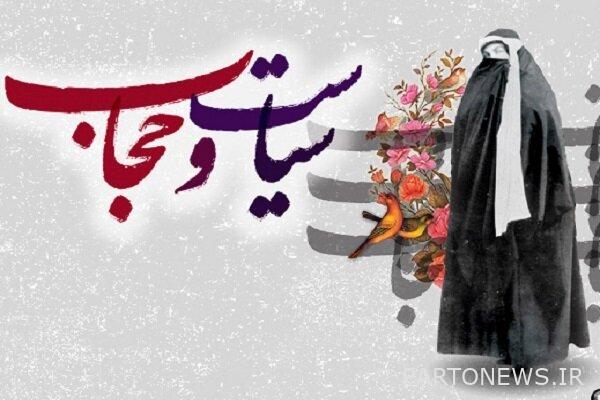Consequences of Hijab Discovery Law / Shah’s plans for not wearing hijab came to a standstill – Mehr News Agency | Iran and world’s news

According to the Mehr news agency, the meeting “The issue of discovering the hijab and Reza Shah” was held by the Young Thought Center on the center’s Instagram page with the presence of Maliheh Bakhshinejad, a researcher in the field of women and the family.
At first, he stated that the change of clothes and clothing in Iran was not a spontaneous and internal phenomenon, he said: this phenomenon with the emergence of foreign stimuli and the culture, customs and thoughts of Western societies and the emergence of modernism in Iran Found. The first manifestations of this change of dress in Iran occurred in men and from the court of Nasser al-Din Shah. During his travels to Europe, Nasser al-Din Shah, influenced by his observations during these trips, became interested in the way women and Western culture were dressed.
Bakhshinejad said: “The rulers of Iran wanted this change of cover and modernization to happen, but the families objected, as a result of this change of cover was summarized in the circles and circles that were connected with the Shah.” At this time there was a change in men’s clothing to European suits and then a change in military uniform. In fact, these changes were due to the fact that it compensated for those failures and the poverty situation that prevailed in Iran by simulating the cover of individuals to the cover of Westerners, as a significant sign of the desire and claim of equality with them.
Referring to the gradual process of discovering Rezakhani’s hijab at the beginning, the researcher noted: After the end of the Qajar period, the transition from the Qajar tradition to Pahlavi modernity occurs, which is in fact the transition from social structures to human agency. Reza Shah tries to raise the issue of changing the dress in the country, but at first he does not start with women, but at the beginning of the law on uniformity of clothes in 1307 and after a few years, during a gradual process, he discusses the discovery of women’s hijab.
He added: “Reza Shah first pursued a soft cultural policy and a change in people’s tastes from 1305 to 1314, and after these 9 years, he came to the conclusion that he had no choice but to pursue this goal with legal support.” Reza Shah first started the press, books and educational systems to ridicule and destroy the hijab, and to do so, he used propaganda to replace ancient values with religious values, and in this regard, he began to tell stories because in the ancient past of Iran, something There is no evidence of unveiling, negligence and secularism. In the meantime, schools were built in Iran where American and European missionaries worked, and in these schools, students were trained with Western thinking, culture, and clothing, and this helped to spread Western culture. The replacement of Shapoo hat with Pahlavi hat was also done in line with cultural policies and the discovery of Rezakhani’s hijab.
The researcher continued: “Gradually, centers such as the Women’s Center and the Patriotic Women’s Center, and publications such as the Women’s Language Magazine and the Women’s World Magazine were established with modernist ideas during this period.” These centers and publications were influential in public opinion. One of the things that happens in these years is related to Nowruz 1307, when Reza Shah’s family goes to the shrine of Imam Masoumeh (AS) with a small and inappropriate hijab and encounters the famous Ayatollah Bafghi. Reza Shah beats Ayatollah Bafghi, instilling in the public mind that in line with his goals, he does not even hesitate to fight the clergy and punch and kick them. During these 9 years, actions and rallies have been held to promote the lack of hijab in the country, which in many cases is opposed by the people and scholars.
The author stated that the Shah’s plans to remove the hijab from women came to a standstill. Let the law do this. Imam Khomeini’s view of disagreement with Reza Shah was that Reza Shah viewed women as a labor force, but Imam Khomeini saw women as a humanizing and educating force. Reza Shah was of the opinion that if he wanted to lead the society towards development and modernity, he should include women in the society with the style of Western interactions. While Imam Khomeini (ra) considered women as an educational status and believed that if this status is taken away from women, the whole society will decline.
He stated that after returning from a trip to Turkey, Reza Shah would follow the path of coercion and law to discover the hijab: In 1314, Reza Shah ordered the then Prime Minister Mahmoud Jam to discover the hijab in schools, offices and hospitals. The order was not, in fact, a law passed by parliament, but a circular communicated to schools, governorates and states. According to the order, teachers, staff, nurses and students must be present at work without hijab. Following this order, several incidents took place in the country, some teachers resigned and a group of people did not allow their children to go to school. At the suggestion of the Minister of Government, the Shah decides to start the discovery of the hijab from the royal family.
Referring to Goharshad uprising, Bakhshinejad said: Goharshad uprising will take place before the law on the discovery of hijab is passed. This uprising begins with the sending of Ayatollah Qomi by the scholars of Mashhad to Tehran to talk to the Shah about the issue of the discovery of the hijab. Ayatollah is arrested and detained in Shahreri before arriving in Tehran. Upon hearing this news, the people of Mashhad will sit in the Goharshad Mosque on July 10, in the first phase of the police confrontation with the people, and the result of this confrontation will be the number of people killed and injured. But the people do not stop and the women join the sit-ins and the population grows every moment. This news was transmitted to Reza Shah and Reza Shah ordered a serious confrontation. According to this order, machine guns are placed on the roofs of the shrine and people are killed. The number of martyrs at midnight on July 13 is estimated at between 2,000 and 5,000.
The researcher stated that the Mashhad incident intensified the dictatorial atmosphere, stating: Due to the dictatorial atmosphere that was created after the Mashhad incident, no public demonstrations took place in the country until January 8, 2006. On January 8, 1956, the first public demonstration by women took place in Mashhad. Mohammad Reza’s cultural policy was exactly the same as Reza Shah’s policy, with the difference that Mohammad Reza turned the hardware aspects into software aspects and pursued this goal by increasing the number of images, vulgar films and depriving women of chadors of many possibilities and demands.
Referring to the role of ambassadors of Western countries and sects in the discussion of the discovery of hijab, the researcher said: People who ran large centers in Iran were supported by heretical sects or Western countries, such as Ms. Dolatabadi who was a Baha’i. Western countries played a financially and educationally supportive role in this area. They had schools and associations in Iran that could have an educational effect on individuals.
Referring to the process of compiling the book, 17 December 1956, the day of women’s liberation, she said: In his speech, the Supreme Leader introduced women during the Revolution and the Holy Defense as the second teacher. This issue motivated the compilation of the book, what were the characteristics of these women that can be effective in the discussion of education as a second teacher and be responsible for this important field. Therefore, the concern of identifying and introducing the lifestyle of the women of the revolution became the main motivation for compiling this book.
He concluded: “It is true that the law on the discovery of hijab was finally repealed, but this law has left its effects that are still going on.” Consumerism and luxury, identity crisis, the confrontation of the clergy with the government, the confrontation of tradition and religion with modernity, and the creation of differences between different classes of women in society are among the ominous effects of this law.
.

